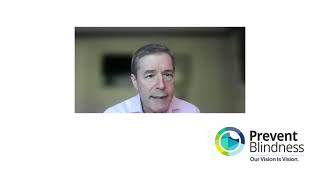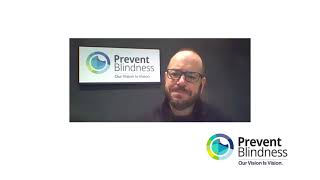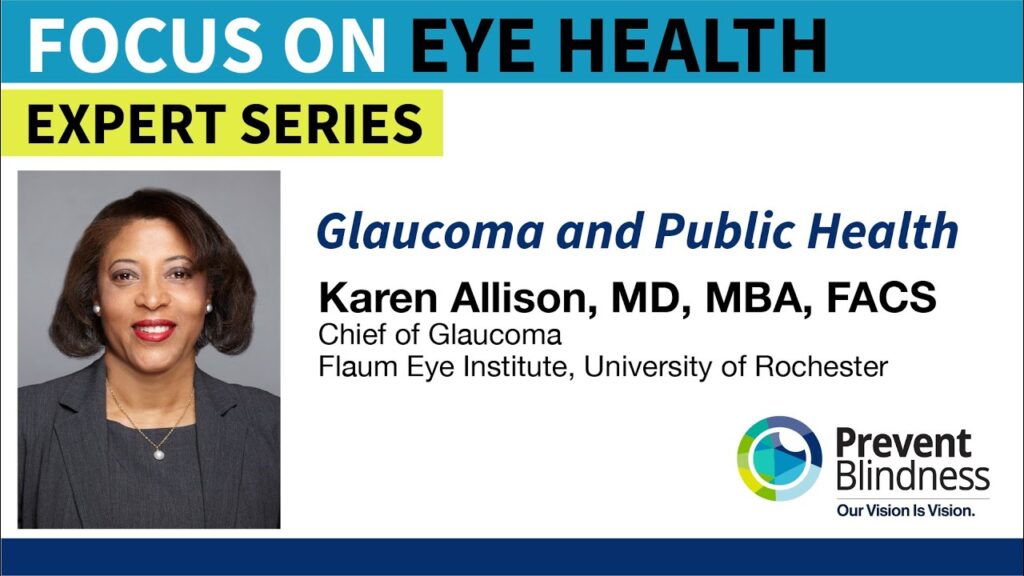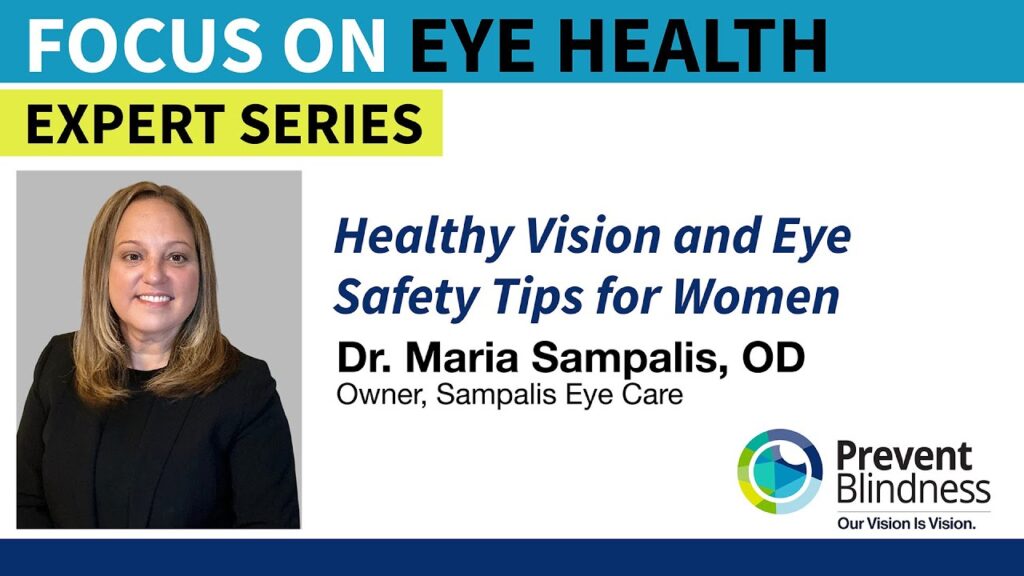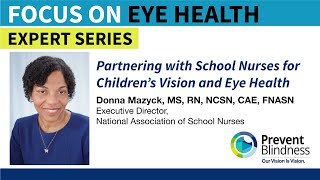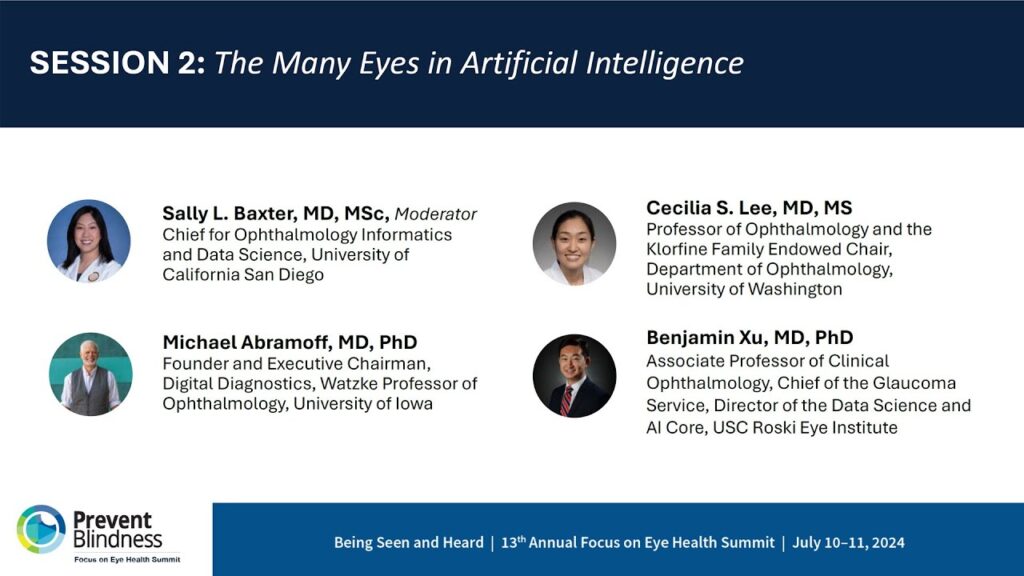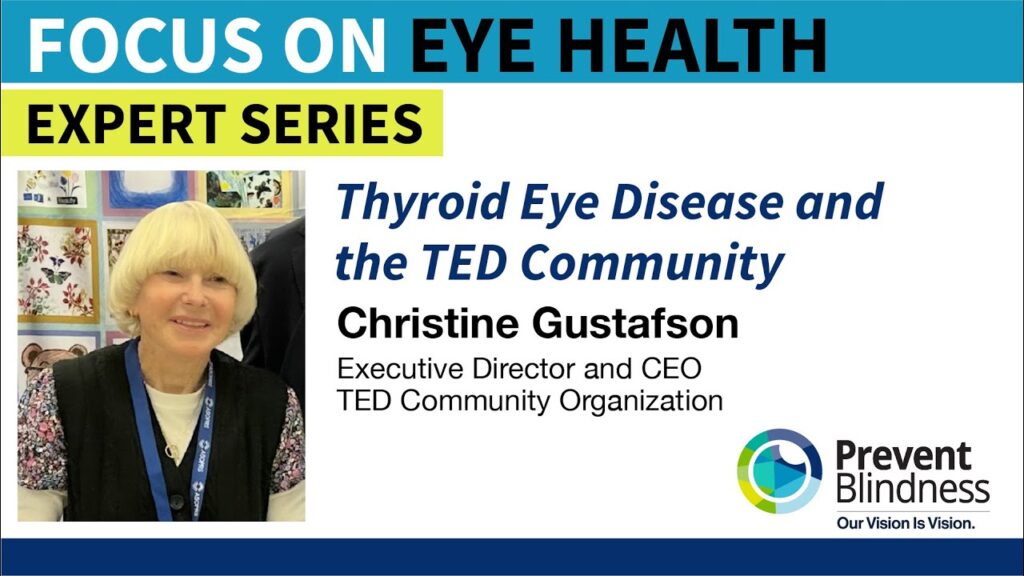The Prevent Blindness Focus on Eye Health Expert Series
Welcome to the Prevent Blindness Focus on Eye Health Expert Series! These video interviews and guest articles bring focus to critical vision health issues and advancements in eye care. Series host Jeff Todd, president and CEO of Prevent Blindness, brings together leading academicians, ophthalmologists, optometrists, and other experts to share their knowledge, research, and insights on preventing vision loss and promoting eye health.
Whether you’re a patient, parent, or simply interested in protecting your vision for life, our expert discussions aim to educate, inspire, and empower. Join us as we explore the future of vision care and work towards a world where preventable blindness is a thing of the past.

Series Host
Jeff Todd
President and CEO
Prevent Blindness
Healthy Vision and Eye Safety Tips for Women
In this episode of the Focus on Eye Health Expert Series, Prevent Blindness Vice President of Public Health and Policy, Kira Baldonado, MPH, discusses women’s eye health with Dr. Maria Sampalis, OD, Owner of Sampalis Eye Care.
Subscribe to Our YouTube channel for more eye health and safety videos.
All Focus on Eye Health Expert Series Videos
Cardiovascular Disease, Hypertension, Overall Health, Ocular Health
Helene D. Clayton-Jeter, OD.
The eyes are a window to overall health. While everyone should have a primary care physician – and routinely visit him or her – some patients often visit their eye doctor more frequently than their primary care provider.
Emily Y. Chew, M.D., Director of the Division of Epidemiology and Clinical Applications, Deputy Clinical Director at the National Eye Institute (NEI), National Institutes of Health (NIH)
People with diabetes have a powerful reason to take care of their eyes. Of the 29 million people in the U.S. with type 1 and type 2 diabetes – about one in 10 people — all are at risk for diabetic eye disease, a leading cause of vision loss and blindness.
Don’t Turn a Blind Eye to Contact Lens Safety
Helene D. Clayton-Jeter, OD.
Approximately 40 million Americans wear contact lenses. I am one of them. The benefits of an unobstructed, natural view of the world are simply priceless. However, I know that with these benefits comes great responsibility on my part for ensuring that my eyes remain healthy and safe. The risk for not doing so is just too great, as unsafe practices can lead to vision threatening complications.
Genetic Testing for Inherited Retinal Disease: The Time is Now
Kari Branham, MS, CGC
When genetic testing is performed for IRDs or other genetic conditions, a sample of blood or saliva is taken and examined for variations in genes that are known to cause IRDs. There are many different genetic causes of retinal degenerative disorders—in fact, over 270 different genes are known to cause inherited retinal disease when they are mutated. Read More
Sherrol A. Reynolds OD, FAAO
People with HIV may experience an array of problems in and around the eyes during the course of the disease. Eye findings can be the initial sign of HIV as well. Common eye findings include retinal hemorrhages and cotton-wool spots (CWS), focal areas of retinal ischemia. HIV-infected persons may also experience dry eye symptoms, double vision (cranial nerve palsies), pain and redness (such as herpes keratitis or iridocyclitis), as well as proptosis, ptosis, and eyelid edema from orbital involvement.
Living with High Intraocular Pressure (IOP)
Mildred M Olivier, MD
One of the things the eye doctor checks when examining your eyes is your intraocular pressure (IOP). That is a measure of the pressure inside your eyeball. Eyeballs aren’t empty. Your body makes various fluids and gels that keep your eyes nourished and maintain their shape. Unfortunately, sometimes the drainage system in the eye causes the fluid to build up, causing the disorder called glaucoma.
Kelly Nichols, OD, MPH, PhD, FAAO
Eyecare providers tend to focus on finding, or not missing, disease in our day-to-day practice. Even when we provide comprehensive eye care and the results are “normal,” our discussion so often centers around the conditions we did not find—glaucoma, macular degeneration, diabetic retinopathy. As a patient, we have the same expectation and hope the doctor tells us we have a “clean bill of health” and no disease, but often the discussion stops there.
Sheila West, PhD
“Smoke gets in your eyes” is more than a catchy song, it is a real problem. According to the 50th Anniversary Surgeon General’s Report on Smoking and Health, smoking is a cause of two of the most significant eye diseases in the world. One of these diseases, Cataract, is the primary reason for vision loss in the world, accounting for 51% of the burden of blindness.
Sports and Recreation: All Eyewear is NOT created Equally
Alan W. Reichow OD, MEd, FAAO
Active kids can break just about anything, and eyewear is no exception, as many parents can attest to. As evidenced by new statistics from Prevent Blindness, sports and play, without appropriate eye protection, puts our youth at risk of eye injury. Since 2015, there has been a nearly 10% increase in such injuries.
Thyroid Eye Disease: Take Another Look
Gary Joseph Lelli, Jr., M.D.
You feel it in your eyes and you see it in the mirror. Something is not quite right, but you’re not sure what. Maybe you have noticed one or both of your eyes are bulging out more, or your eyelids are swollen. Maybe you have persistent irritation – like dry, gritty, red eyes – or light sensitivity, pain and double vision. Perhaps you have been diagnosed with allergies, an infection or dry eye disease, but it is not getting better with treatment.
Suveera Dang, MPH, Rajeev Ramchandran, MD, MBA, Ajay E. Kuriyan, MD, MS
Diabetic eye disease is one of the leading causes of blindness and impaired vision. Almost 30 million Americans have diabetes and nearly 8 million have diabetic retinopathy. Diabetic retinopathy costs the country $6.2 billion each year.1,2 Diabetic retinopathy refers to damaged blood vessels in the innermost layer of the back of the eye called the retina.
Janine Austin Clayton, M.D., Director, Office of Research on Women’s Health, Department of Health and Human Services
More women than men face vision-related issues, including a wide range of eye diseases and conditions beyond refractive error and blindness. Because women tend to live longer than men, more women get eye diseases, since age is a key risk factor for vision problems. Hormones also play a role.
- Video Interviews
-
Healthy Vision and Eye Safety Tips for Women
In this episode of the Focus on Eye Health Expert Series, Prevent Blindness Vice President of Public Health and Policy, Kira Baldonado, MPH, discusses women’s eye health with Dr. Maria Sampalis, OD, Owner of Sampalis Eye Care.
Subscribe to Our YouTube channel for more eye health and safety videos.
All Focus on Eye Health Expert Series Videos
- Guest Columns
-
Cardiovascular Disease, Hypertension, Overall Health, Ocular Health
Helene D. Clayton-Jeter, OD.
The eyes are a window to overall health. While everyone should have a primary care physician – and routinely visit him or her – some patients often visit their eye doctor more frequently than their primary care provider.
Emily Y. Chew, M.D., Director of the Division of Epidemiology and Clinical Applications, Deputy Clinical Director at the National Eye Institute (NEI), National Institutes of Health (NIH)
People with diabetes have a powerful reason to take care of their eyes. Of the 29 million people in the U.S. with type 1 and type 2 diabetes – about one in 10 people — all are at risk for diabetic eye disease, a leading cause of vision loss and blindness.
Don’t Turn a Blind Eye to Contact Lens Safety
Helene D. Clayton-Jeter, OD.
Approximately 40 million Americans wear contact lenses. I am one of them. The benefits of an unobstructed, natural view of the world are simply priceless. However, I know that with these benefits comes great responsibility on my part for ensuring that my eyes remain healthy and safe. The risk for not doing so is just too great, as unsafe practices can lead to vision threatening complications.
Genetic Testing for Inherited Retinal Disease: The Time is Now
Kari Branham, MS, CGC
When genetic testing is performed for IRDs or other genetic conditions, a sample of blood or saliva is taken and examined for variations in genes that are known to cause IRDs. There are many different genetic causes of retinal degenerative disorders—in fact, over 270 different genes are known to cause inherited retinal disease when they are mutated. Read More
Sherrol A. Reynolds OD, FAAO
People with HIV may experience an array of problems in and around the eyes during the course of the disease. Eye findings can be the initial sign of HIV as well. Common eye findings include retinal hemorrhages and cotton-wool spots (CWS), focal areas of retinal ischemia. HIV-infected persons may also experience dry eye symptoms, double vision (cranial nerve palsies), pain and redness (such as herpes keratitis or iridocyclitis), as well as proptosis, ptosis, and eyelid edema from orbital involvement.
Living with High Intraocular Pressure (IOP)
Mildred M Olivier, MD
One of the things the eye doctor checks when examining your eyes is your intraocular pressure (IOP). That is a measure of the pressure inside your eyeball. Eyeballs aren’t empty. Your body makes various fluids and gels that keep your eyes nourished and maintain their shape. Unfortunately, sometimes the drainage system in the eye causes the fluid to build up, causing the disorder called glaucoma.
Kelly Nichols, OD, MPH, PhD, FAAO
Eyecare providers tend to focus on finding, or not missing, disease in our day-to-day practice. Even when we provide comprehensive eye care and the results are “normal,” our discussion so often centers around the conditions we did not find—glaucoma, macular degeneration, diabetic retinopathy. As a patient, we have the same expectation and hope the doctor tells us we have a “clean bill of health” and no disease, but often the discussion stops there.
Sheila West, PhD
“Smoke gets in your eyes” is more than a catchy song, it is a real problem. According to the 50th Anniversary Surgeon General’s Report on Smoking and Health, smoking is a cause of two of the most significant eye diseases in the world. One of these diseases, Cataract, is the primary reason for vision loss in the world, accounting for 51% of the burden of blindness.
Sports and Recreation: All Eyewear is NOT created Equally
Alan W. Reichow OD, MEd, FAAO
Active kids can break just about anything, and eyewear is no exception, as many parents can attest to. As evidenced by new statistics from Prevent Blindness, sports and play, without appropriate eye protection, puts our youth at risk of eye injury. Since 2015, there has been a nearly 10% increase in such injuries.
Thyroid Eye Disease: Take Another Look
Gary Joseph Lelli, Jr., M.D.
You feel it in your eyes and you see it in the mirror. Something is not quite right, but you’re not sure what. Maybe you have noticed one or both of your eyes are bulging out more, or your eyelids are swollen. Maybe you have persistent irritation – like dry, gritty, red eyes – or light sensitivity, pain and double vision. Perhaps you have been diagnosed with allergies, an infection or dry eye disease, but it is not getting better with treatment.
Suveera Dang, MPH, Rajeev Ramchandran, MD, MBA, Ajay E. Kuriyan, MD, MS
Diabetic eye disease is one of the leading causes of blindness and impaired vision. Almost 30 million Americans have diabetes and nearly 8 million have diabetic retinopathy. Diabetic retinopathy costs the country $6.2 billion each year.1,2 Diabetic retinopathy refers to damaged blood vessels in the innermost layer of the back of the eye called the retina.
Janine Austin Clayton, M.D., Director, Office of Research on Women’s Health, Department of Health and Human Services
More women than men face vision-related issues, including a wide range of eye diseases and conditions beyond refractive error and blindness. Because women tend to live longer than men, more women get eye diseases, since age is a key risk factor for vision problems. Hormones also play a role.










